The Demilitarized Zone, or DMZ, is the stretch of land that runs roughly straight through the middle of the Korean peninsula. It serves as the border between North and South Korea, and it is the most heavily militarized border in the world. The term "border" hardly seems strong enough to describe this 4km wide buffer between the north and the south, especially since it's enactment sort of seems like it was supposed to be temporary until they could, you know.. "work. it. out."
So, WWII.
A few days following Hiroshima and with a hunch that the Soviets were looking to become Korea's newest occupier, the Japanese-occupied Korean peninsula was surrendered.
To whom? The Allied Forces, but it was still a bit muddy.
The Soviets headed south through the Korean peninsula and feeling the same hunch as the Japanese, the United States headed north.
To keep the armies administratively separate, it was proposed that a line be drawn down the middle of Korea at the 38th parallel. The border was sketched on such whim that it's creator actually drew it on a small map of Asia in a National Geographic magazine.
At the completion of WWII, the Soviets and the United States were to monitor the fall of the Japanese invasion in North and South Korea respectively, and were to oversee Korea as it worked to become an independent nation.
As we know, the Soviets and the United States eventually decided that they actually didn't care for one another too much (read: Cold War), so agreeing on what to do with Korea didn't quite come to fruition.
The Soviets pushed their socialist influence on the north and the United States opted for the establishment of a Western-style government in the south. So became the Democratic People's Republic of Korea (North Korea) and the Republic of Korea (South Korea). This was 1948.
In 1950 the Korean War began. As the front of the war pushed it's way south, international forces got involved. Stealing three million lives, an Armstice Agreement was signed in 1953 that enacted that both sides withdrawal troops 2km from the border, hence the name "Demilitarized Zone." The countries are technically still at war as a peace treaty was never signed.
In case you've been hibernating, "The Great Leader" died just a week before I planned to take this tour. (And so you don't think I'm insane, I booked this tour previous to that fact.) I asked my family if they were still keen to go, and everyone agreed we should do it.
We took the USO Tour, as unless you are accompanied by a US or South Korean soldier, you cannot go to the Joint Security Area, or JSA. This is the only place on the DMZ where soldier's from both sides stand face to face.
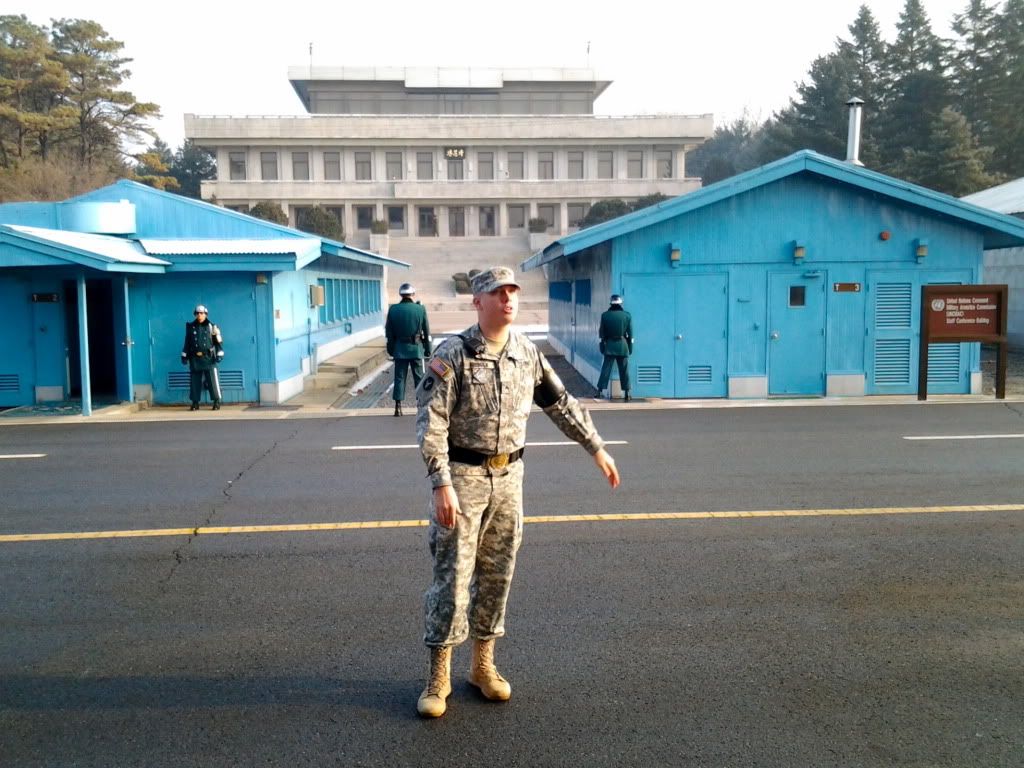
The entire time my group stood here, a visible North Korean soldier kept us under surveillance through binoculars. In fact, there were a number of places on the tour where we were informed we were being watched.
Inside the left blue building pictured above:
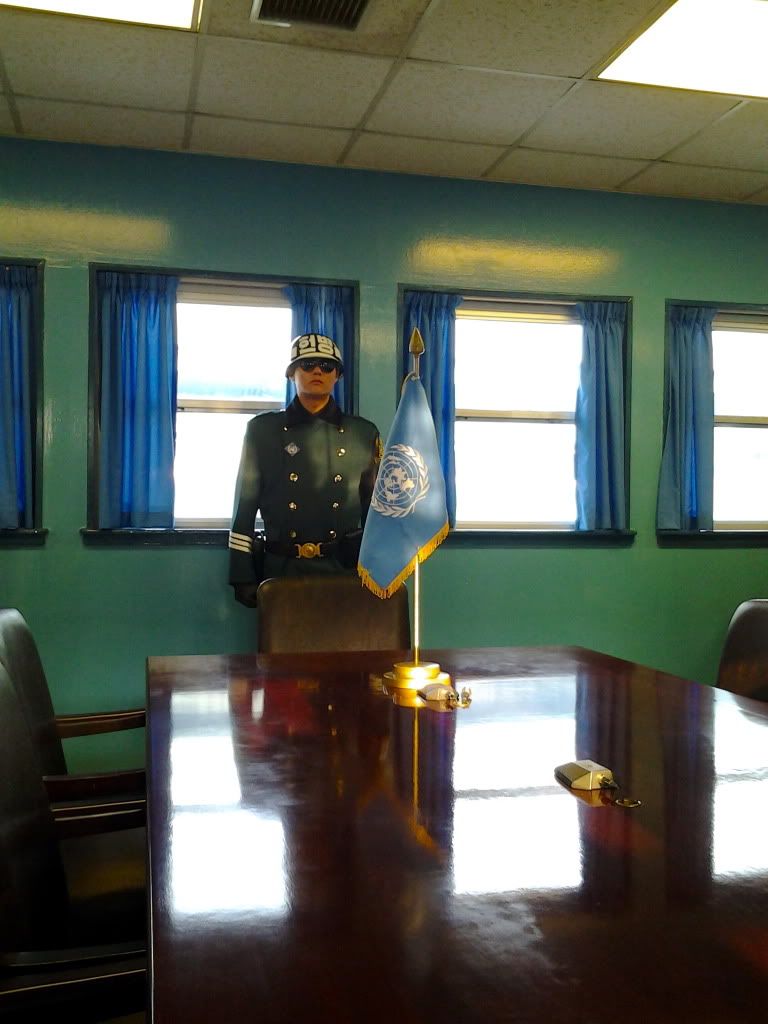
South Korean Solider
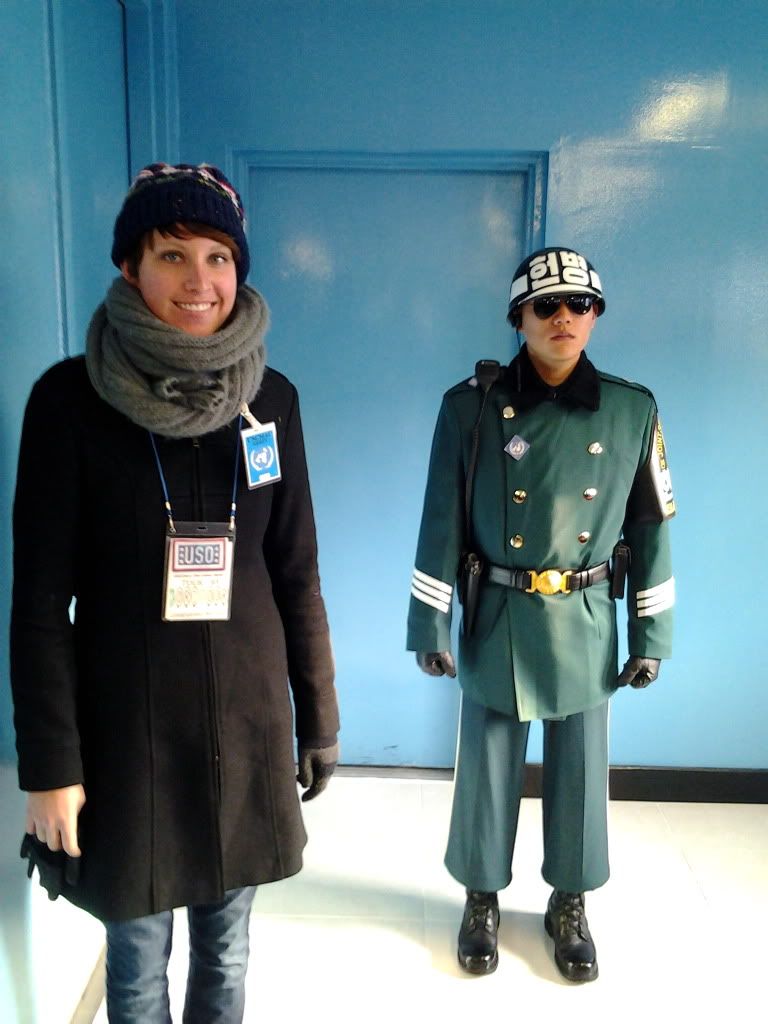
In this picture, I am technically in North Korea.
Skepticism is high.. from both sides. South Koreans are very rarely allowed to take the USO tour, because they are not allowed to go to the JSA without extensive, multi-month background checks.

the 3rd tunnel, discovered October 17, 1978
South Korea has discovered a handful of North Korean dug tunnels in the past 50 years. You can actually walk down into this one, but unless you think it's fun to walk hunched over like an ape for twenty minutes or you think hitting your head repetitively on rocks is an enjoyable past time, I would skip this if you're over 5 foot 6.
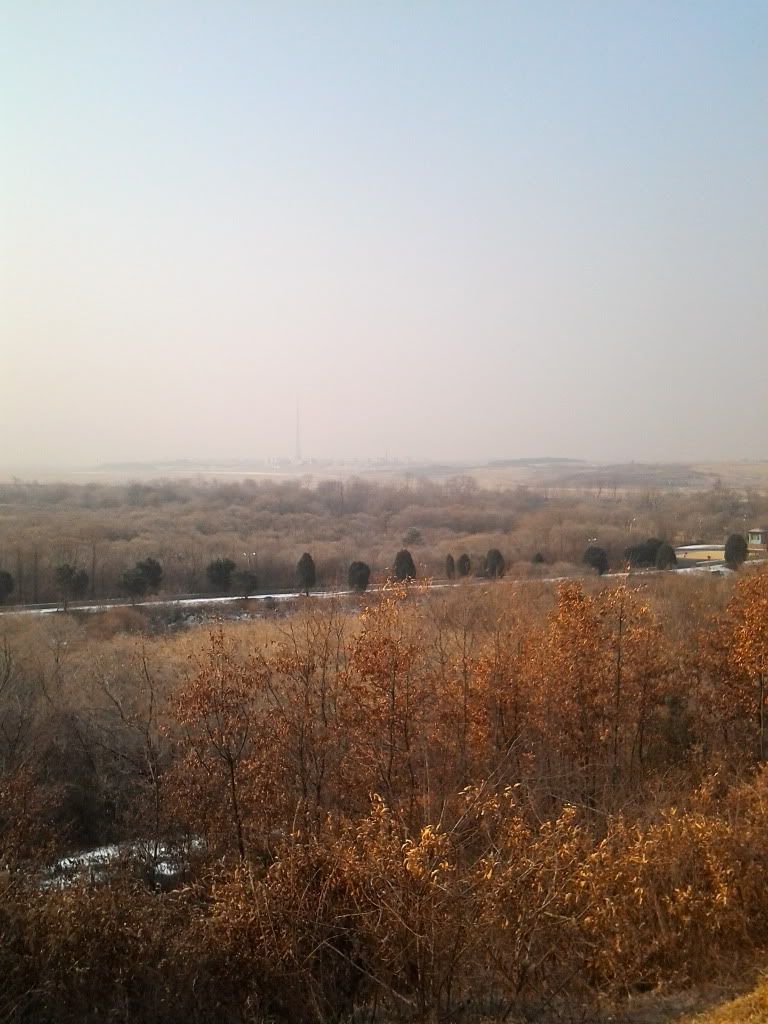
If you look really closely, you can see the Panmunjom flag pole. At 160m, this thing flies a 600 pound North Korean Flag in the Korean village of Kijŏngdong. It's commonly referred to as "Propaganda Village" because it was created to ensure the rest of the world that North Korea is prosperous country when observation from the South highly suggests that the buildings you can see are floorless, empty, shells.
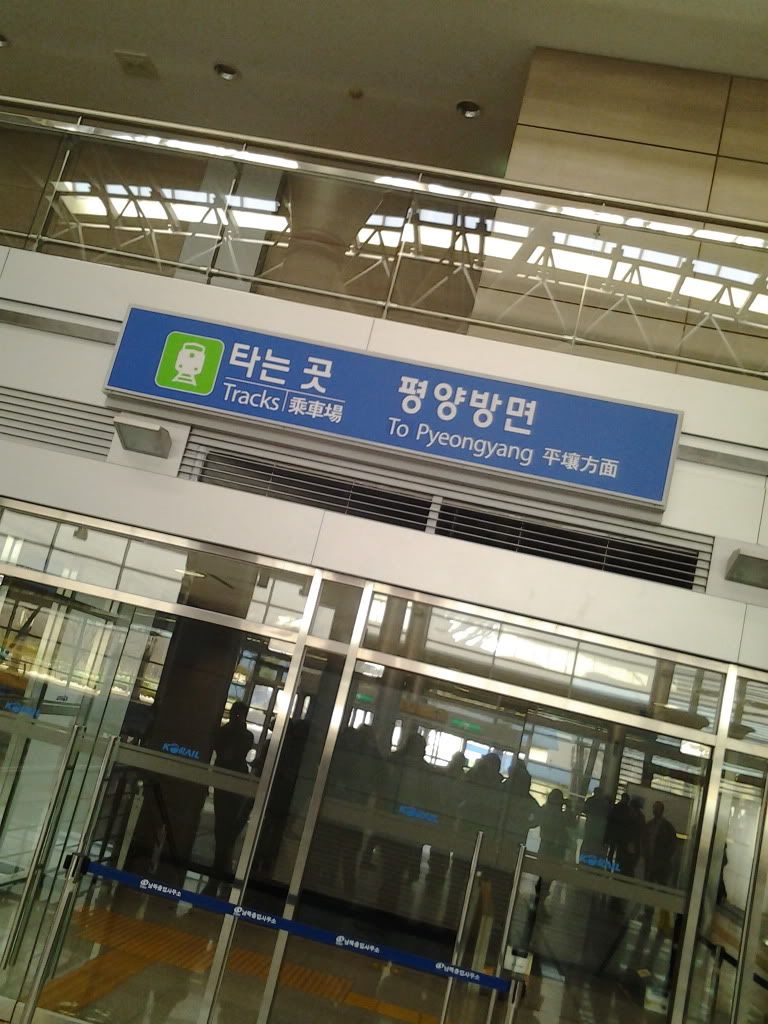
Dorasan Station is now the northernmost stop on the Gyeongui Line that used to connect North and South Korea. The station looks like any other international train station, except this one is no long in use after North Korea accused South Korea of some nonsense in 2008. The station is now only open to tourists, but many hope that one day this railway will aid in the reunification of North and South Korea.
SIGH. ALL THIS HISTORY. I'M TIRED.
The vague mumblings I've overheard about the future of Korea have involved both hesitation and hope and if you were to ask me how I feel about the situation, those emotions hold spots one and two on my list.
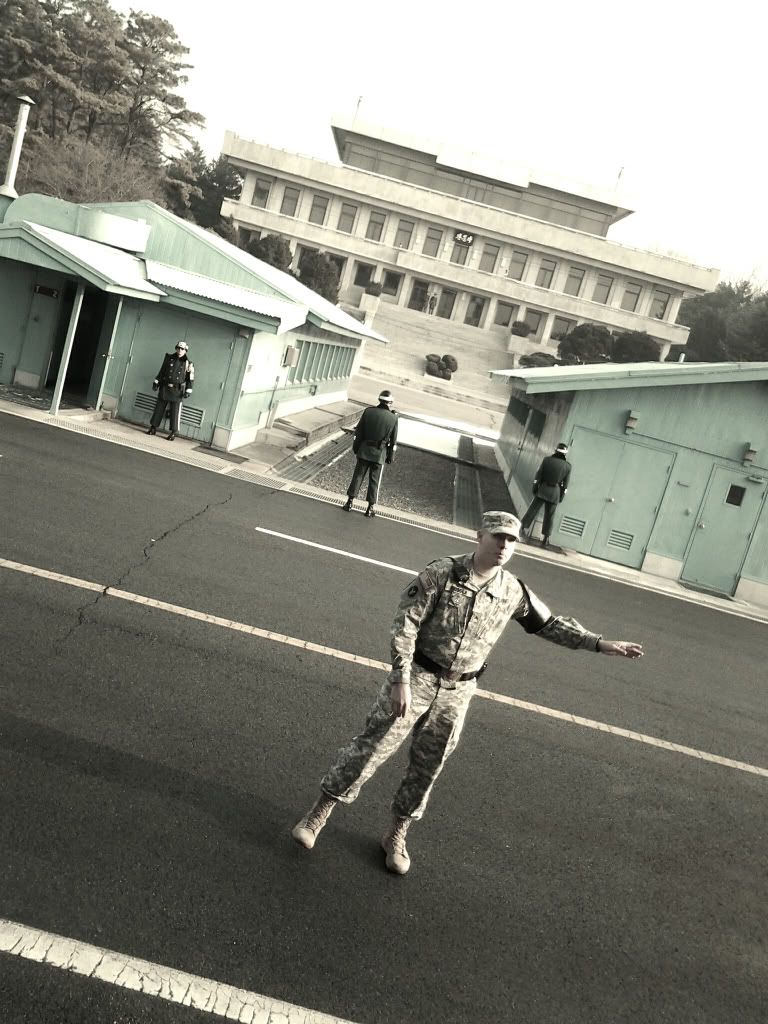
JSA, DMZ
No comments:
Post a Comment